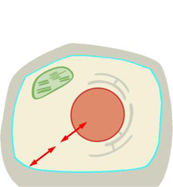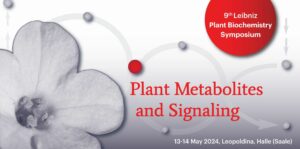// P10

Nuclear-cytoplasmic shuttling of plant PI4P 5-kinases
Project Leader// Prof. Dr. Mareike Heilmann
MLU, Inst. of Biochemistry and Biotechnology
Dept. of Plant Biochemistry
Nuclear Phosphoinositides
The signaling lipid phosphatidylinositol 4,5- bisphosphate (PI(4,5)P2) is a minor component of eukaroytic membranes and is present in a variety of subcellular locations. PI(4,5)P2 regulates a broad range of physiological processes and signaling pathways by acting as a lipid ligand for PI(4,5)P2-dependent effector proteins. PI(4,5)P2 is formed by phosphatidylinositol 4-phosphate 5-kinases (PI4P 5-kinases or PIP5Ks). The subcellular targeting of PIP5Ks is dynamic and allows the specific and temporary production of PI(4,5)P2 in certain cellular locations to initiate particular local effects. Besides their well-characterized localization at the plasma membrane, PIP5Ks and PI(4,5)P2 have previously been reported to also reside in plant nuclei. In all eukaryotic systems the understanding of events regulated by phosphoinositides in the cytosol and at the plasma membrane is far deeper than that of nuclear phosphoinositides. PI(4,5)P2-dependent regulation of nuclear processes may be important for plant function, as it has been reported for other eukaryotes. This PhD project aims to unravel nuclear functions of PIP5Ks and PI(4,5)P2.
In the Arabidopsis genome, PIP5Ks are encoded as a family of 11 isoforms (PIP5K1-PIP5K11). A bioinformatics analysis of the deduced amino acid sequences indicates the presence of at least one recognizable nuclear localization sequence (NLS) in each of the eleven PIP5K isoforms. Nuclear localization of plant PIP5Ks appears dynamic and is not observed at all times or in cells of all plant tissues. Therefore, we conduct a systematic analysis of when and where nuclear localization of PIP5Ks occurs in plants. It is the working hypothesis of this project that nuclear-cytoplasmic shuttling of PIP5Ks depends on cellular requirements which might change between developmental stages or tissues, or upon stress conditions. We furthermore hypothesize that nuclear localization of PIP5Ks is regulated by NLS that might be masked or active, depending on posttranslational modifications of PIP5Ks. We have already identified potential phosphorylation sites in PIP5K1 and PIP5K2, which among others also target the NLSs of PIP5K1 and PIP5K2, respectively, and it is one goal of this project to determine the effects of this modification.
Research in this project is subdivided in the following work packages:
- Determine physiological conditions mediating nuclear localization of selected PIP5Ks in plant cells
- Engineer PIP5K variants containing dysfunctional NLSs, or nuclear exclusion signals, or that can no longer be phosphorylated in their NLS regions
- Recombinantly express and biochemically characterize PIP5K variants from (ii) in vitro
- Biochemically and physiologically characterize Arabidopsis pip5k mutants expressing the PIP5K variants from (ii) to determine physiological roles of nuclear PIP5Ks
- Characterize the subnuclear localization of PIP5Ks and PI(4,5)P2 by high-resolution confocal imaging




